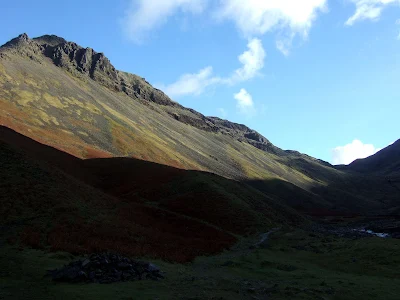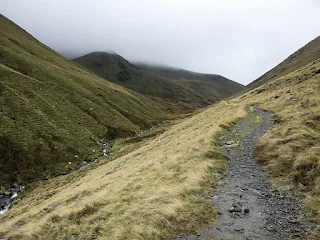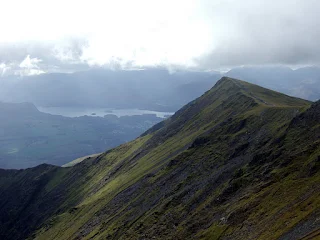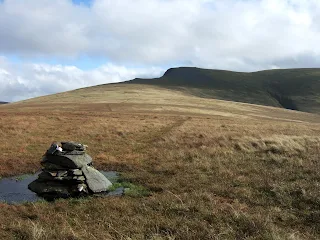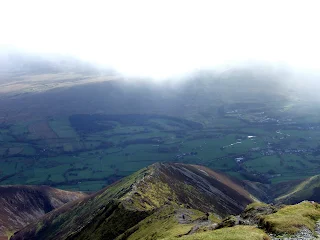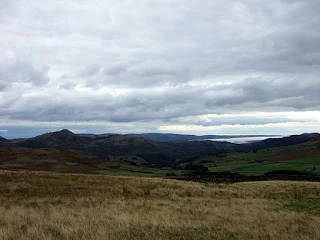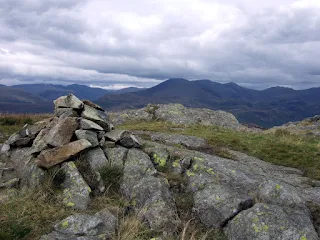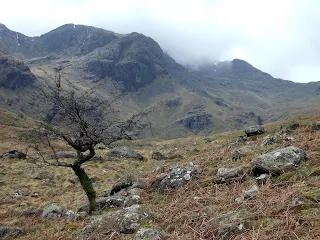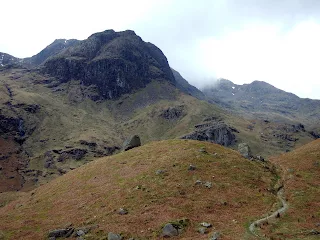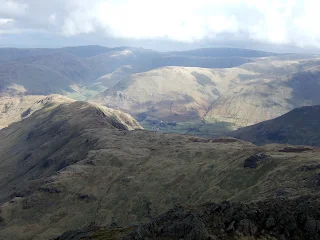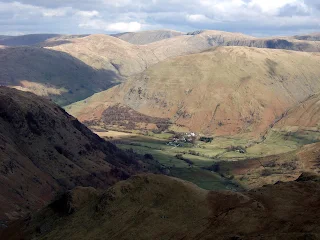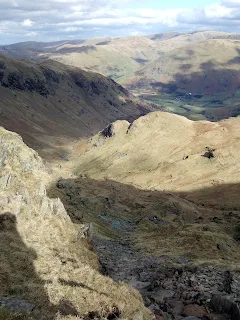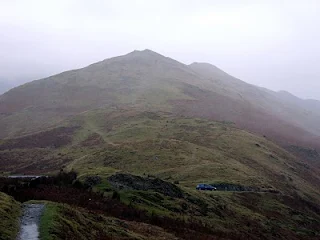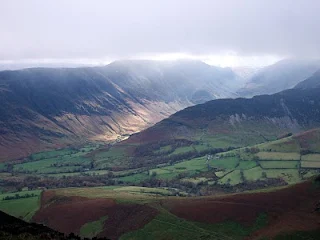One Spring day thirty something years ago, two boys set out with their fathers to climb England's highest mountain. Myself, Dad, Cousin Brian and Uncle Gordon headed up the Sty Head track from Wasdale before following the trail passing beside Sprinkling Tarn beneath the gaunt and sombre crags of Great End. All were going well and the intrepid party were confident of success when as happens all too often in the
Lakes; the weather had the last say.
So it was that at our high point of just under 2400 feet by the shelter below Esk Hause, in rapidly deteriorating conditions, the decision was made to abandon the quest and bring to a close my first real experience of fellwalking.
Much more recently on an October morning when cloud hung about the high summits, just two of the original party set off once again from Wasdale to complete the route we had started years earlier. This time I acted as guide having climbed the Pike many times while Brian made the trip in memory of his dad - my Uncle Gordon - who sadly is no longer with us.
Lakes; the weather had the last say.
So it was that at our high point of just under 2400 feet by the shelter below Esk Hause, in rapidly deteriorating conditions, the decision was made to abandon the quest and bring to a close my first real experience of fellwalking.
Much more recently on an October morning when cloud hung about the high summits, just two of the original party set off once again from Wasdale to complete the route we had started years earlier. This time I acted as guide having climbed the Pike many times while Brian made the trip in memory of his dad - my Uncle Gordon - who sadly is no longer with us.
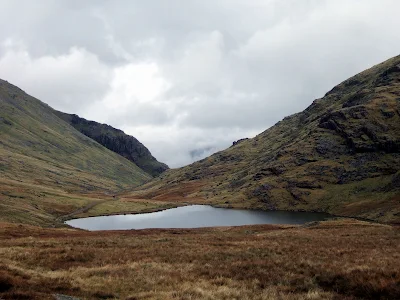 |
| As we reached the top of the pass Styhead Tarn comes into view. the path down that side goes to Seathwaite in Borrowdale though our route lay up to the right |
 |
| Brian on the path above Styhead Pass as we approached Sprinkling Tarn.This trail goes to Langdale... eventually. Great Gable is the mountain behind. |
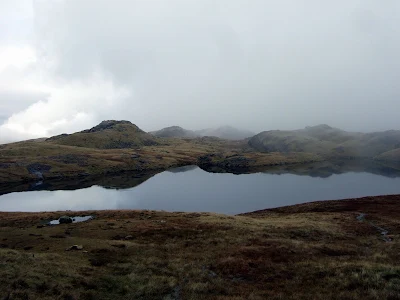 |
| At almost 2000 feet Sprinkling Tarn is the higher of the two tarns on this route. It has the dubious honor of being the wettest place in England |
 |
| The upper part of the route to Scafell Pike leads across a rough and stony landscape between the 3000 foot high subsidiary summits of Ill Crag and Broad Crag |
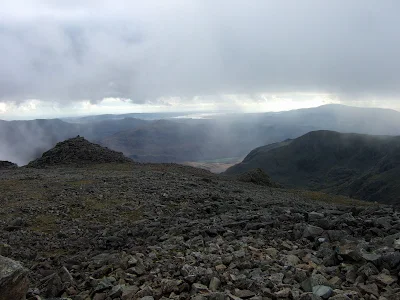 |
| At last the top! Looking out over Morecambe Bay from the highest mountain in England |
And so we had climbed the mountain by the route we had set out on the first time around - the easiest way though not the shortest - by Esk Hause. Our return was by the Corridor Route which is a fine path and links Styhead Pass with Lingmell Col below and to the North of the summit.The paths are easy but rough in places and we were surprised at the number of people still going up at this late hour and as it turned out, our own adventure was not yet over.
Descending the corridor route just beyond the deep chasm of Piers Ghyll. we became aware of people clearly in some distress. They turned out to be a father and son team who on attempting to descend the slopes down to the Left had got into difficulty. They were able luckily to rejoin us when they spotted where we were on the right path.
For those who know this route we were just below the short rocky step that you scramble down when climbing from Sty Head and the way was not so obvious in descent where the step has to be climbed. It was marked with a cairn but in the fading light and worsening weather (that's why there's no more photos) the two had missed it. The step could appear daunting from below but there is an easy path ten or fifteen feet above!
Brian led the way and I followed the man and boy - who was a similar age to the two boys at the start of this story - up the rocks to the easy path above where they were back on safe ground. At least our return to Scafell Pike had done some good. This route is a safe corridor through a maze of crags and deep gullies so it is always best to stick to the main path unless you know it really well!
Pete Buckley June 2013
Start and finish at The Green, Wasdale Head >>> How Far? 14.5km/9 miles >>> Total Ascent? 3200ft/975m >>> Highpoint Scafell Pike 3210ft/978m
.
